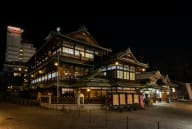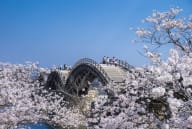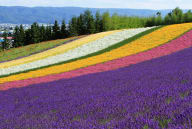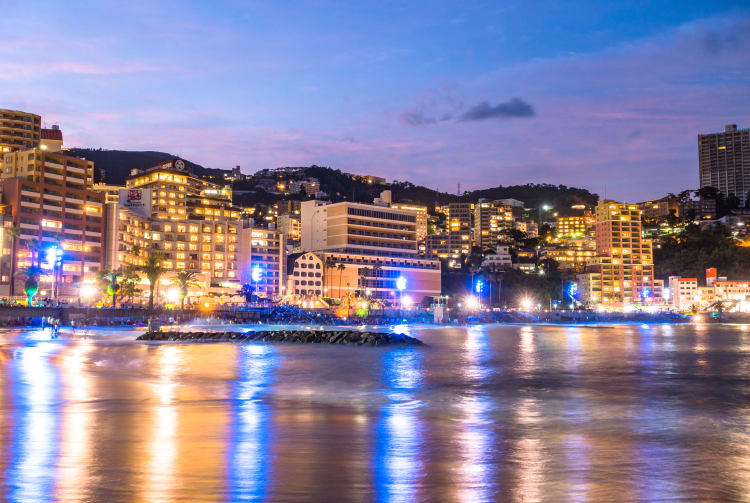Le shogun Tokugawa Ieyasu aimait tant les eaux de cette station thermale qu'il les a ramenées au château d'Edo
Les eaux d'Atami attirent les baigneurs depuis l'époque de Nara (710-794). Le shogun Tokugawa Ieyasu (1543-1616) était si épris de leurs propriétés curatives qu'il essaya de recréer l'onsen à Edo (aujourd'hui Tokyo). Les divers onsen d'Atami – il n'y en a pas qu'un seul – ont aussi attiré nombre de gens riches et célèbres des temps modernes.
À ne pas manquer
- Essayez les bains extérieurs et intérieurs
- Les fruits de mer – Atami est une ville de pêcheurs
- Une visite au château d'Atami, pour le panorama et plus encore
Comment s'y rendre
Les lignes Tokaido Shinkansen, Tokaido et Ito vont toutes à la gare d'Atami, tout comme de nombreux bus.
Pour aller de Tokyo à Atami, vous pouvez prendre le Kodama Tokaido Shinkansen, le limited express Odoriko, les trains réguliers Tokaido ou le bus. Le shinkansen est le plus rapide, en environ 50 minutes. Le bus est beaucoup moins cher, mais il faut compter 2 h 30 à 3 h de trajet selon la circulation.
Anecdotes
Le shogun Tokugawa Ieyasu a ramené les eaux d'Atami à Edo pour s'y baigner
Atami est depuis longtemps une destination prisée des couples
La renommée de la source d'eau chaude salée d'Atami se retrouve dans son nom, qui signifie « mer chaude »

Bain de pieds au Ieyasu-no-yu
Les bénéfices de l'eau chaude
L'eau très chaude et fortement salée possède d'excellentes propriétés isolantes, idéal pour soigner les cas de névralgie et de sensibilité excessive au froid. L'eau raffermit également la peau et tonifie le corps.
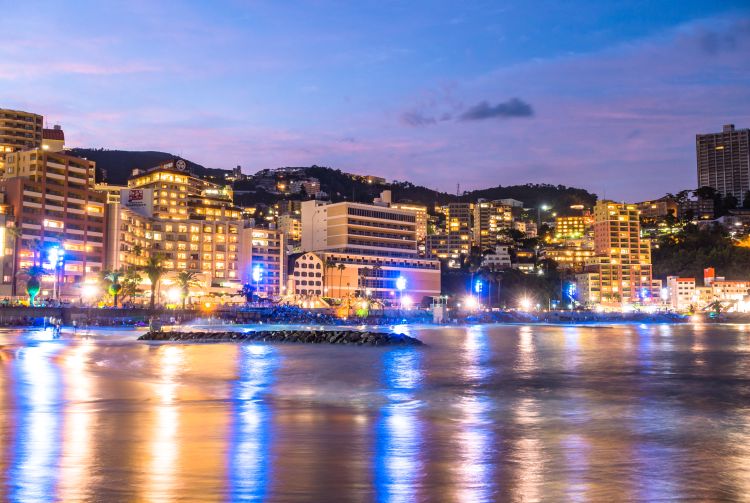
Vue romantique des quais d'Atami en soirée
Les meilleures possibilités pour les randonneurs d'un jour
Vous trouverez divers établissement dotés de bains intérieurs et extérieurs près de la gare d'Atami. Il est également possible de louer des bains privatifs. Il y a même un bain de pieds appelé Ieyasu-no-Yu devant la gare d'Atami, du nom du célèbre shogun.
Des confiseries pour les amateurs d'onsen
L'« onsen manju », une sorte de boulette sucrée, est probablement la douceur à laquelle les gens pensent lorsqu'ils cherchent un cadeau à rapporter d'Atami. Si l'ingrédient principal est une pâte de haricots sucrée, on trouve de nombreuses variantes, par exemple aux écorces d'orange amère, à la farine d'orge, aux ignames japonaises, à la cassonade, au thé et même aux feuilles de périlla.
Que faire pour changer des baignades
Visitez le château d'Atami pour de superbes vues de la ville et de l'océan Pacifique, offrez-vous une séance culture au musée d'art MOA et visitez l'Acao Forest et ses 12 jardins thématiques. Ce dernier dispose d'un atelier de bricolage où l'on peut fabriquer des objets sur le thème des fleurs. Le musée d'art MOA possède de magnifiques œuvres d'art réparties sur un site magnifique surplombant l'océan.
Le château d'Atami a été construit en 1959 comme attraction touristique. Le téléphérique est le moyen le plus facile pour s'y rendre à partir des onsen au pied de la montagne. À l'intérieur, un musée distille des histoires et anecdotes sur les différents châteaux du Japon. Mais l'attrait principal est le fantastique panorama depuis le château.

Panorama depuis le château d'Atami
















